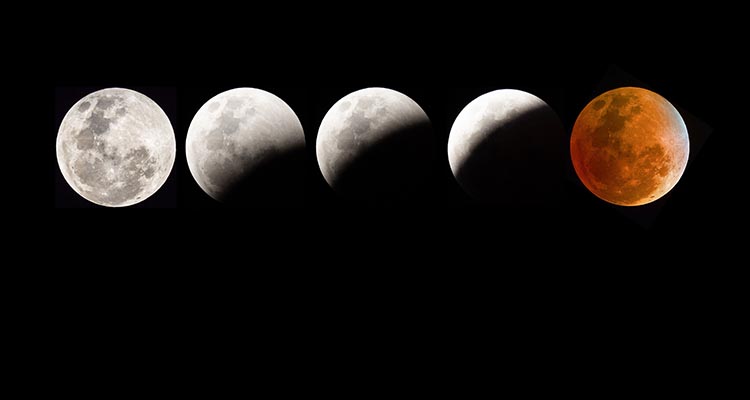Allow me to introduce you to one of my favorite words, a word that may be new to most of my gentle readers: “syzygy.”
Syzygy (pronounced: sizz-ah-gee) is the alignment in a straight line of three or more celestial bodies usually in the same gravitational system. As an amateur astronomer, the idea of an impending syzygy sparks extreme excitement and anticipation. Simply said, the very best events that happen in the sky occur near or during a syzygy.
After much observation, reflection and personal participation, I have developed an ever-evolving, working theory about vocabulary, the basic word units we use in our language. The theory goes like this: every new word you learn does not increase the number of words you can use in a linear sense, i.e., increase from 50,000 words to 50,001. Rather, vocabulary word usage is multiplicative, i.e., each new word learned can be used with every other word you know, thereby multiplying your ability to use the new word with every other word in your vocabulary.
If the word syzygy is a new word to you, your vocabulary just increased by only one word, but your personal language usage swelled, bringing to you a new increased understanding by combining and interacting the word syzygy with all the other words you know. As far as language is concerned, a single new word increases the possible combinations with all the other words you know by multiplication and may double the number of possible combinations available to communicate with others, in self-reflection and understanding.
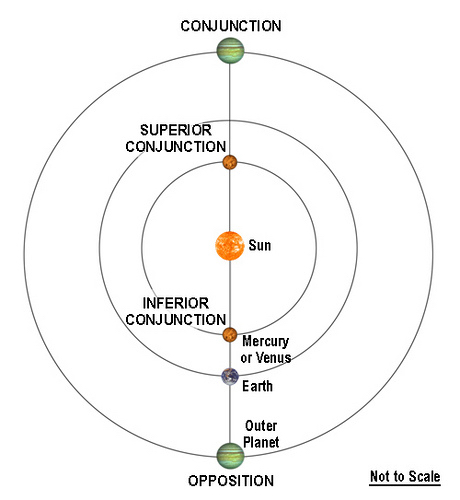 Multiple straight lineups (or nearly straight lineups) of celestial alignments (syzygy) include:
Multiple straight lineups (or nearly straight lineups) of celestial alignments (syzygy) include:
- Conjunctions:
Example: apparent lineup of the sun, Earth and another celestial body, say the planet Mars. At this time Mars is either closest to the Earth or farthest from the Earth. Also used for when multiple objects appear to come close in the sky from the perspective of the observer.
- Oppositions:
Example: apparent lineup of the sun, Earth and another celestial body, say the planet Mars. At this time Mars is closest to the Earth, is in “full” phase, appears largest, and is best for viewing.
- Transits:
Example: the apparent lineup of a large astronomical body (the sun) and the observer (usually the Earth) with a smaller body (planet Mercury or Venus) in between. The result — from the Earth, Mercury or Venus is seen as a tiny dot moving across the surface of the Sun.
- Occultations:
Example: apparent lineup of the Earth, moon and a star (or other celestial body), eclipsing the star. Applies to any apparently large astronomical body passing between an apparently smaller body and the observer.
- New Moon:
The phase of the moon (the moon is minimally illuminated by the sun) occurs when the moon is nearly between the Earth and the sun.
- Full Moon:
The phase of the moon (the moon is maximally illuminated by the sun) occurs when the Earth is nearly between the moon and the sun.
- Eclipses:
Involve one astronomical body passing directly in front of another body projecting its “shadow” on the other.
Example: lunar eclipse — from the perspective of the Earth, the moon enters the Earth’s shadow darkening the full moon
Example: solar eclipse — from the perspective of the Earth, the moon transits across the face of the sun, projecting the shadow of the moon upon the surface of the Earth during the new moon phase.
Of all the various syzygy events, the most spectacular of all are eclipses. Not long ago, you will recall that North America was gripped by a fevered solar eclipse mania when the total solar eclipse of Aug. 21, 2017, swept across the continental United States. Millions drove hundreds of miles to see totality. Over a hundred million persons stopped what they were doing to watch some, part or all of the event. We will limit the eclipse events in this discussion to just the three celestial bodies — the sun, Earth and moon.
On the evening of Jan. 20 and into the morning of Jan. 21, North, Central and South America will witness (if local weather cooperates) a total lunar eclipse. Unlike the total solar eclipse of Aug. 21, 2017, a lunar eclipse requires no special filters to protect the eyes. We are just watching the Earth’s shadow slowly shroud the full moon — so it is perfectly safe to watch.
Additionally, to see totality for a solar eclipse, you had to be standing along a relatively narrow path where the “umbra” — the inner total shadow of the moon — intersected the surface of the Earth. The rest of us outside that narrow band saw a partial eclipse and were within the “penumbra” — the outer shadow of the moon. Because the Earth is larger than the moon (11/3 larger), the size of the Earth’s “umbra” at a “lunar unit” distance (average distance from the Earth to the moon) is larger than the entire disk of the moon. This means that “everyone” with a clear sky on the America’s side of the Earth on the evening of Jan. 20 will be able to see the entire total lunar eclipse.
Let’s break down the total lunar eclipse into stages and times (EST) for our Wheeling readers (others in differing time zones can easily adjust to their local times):

- 9:35 p.m.: Moon enters the edge of the Earth’s penumbra shadow — “unobservable” to the unaided eye at the start.
- 10:34 p.m.: Moon enters the edge of the Earth’s umbra shadow — the deepest shadow, partial eclipse begins, noticeable darkening on leading side. Watch as this progresses — you will be able to see the shape of the shadow of the Earth is a circle. Only a sphere will always cast a circular shadow. Ancient people used this logic to prove that the Earth has a spherical shape thousands of years ago.
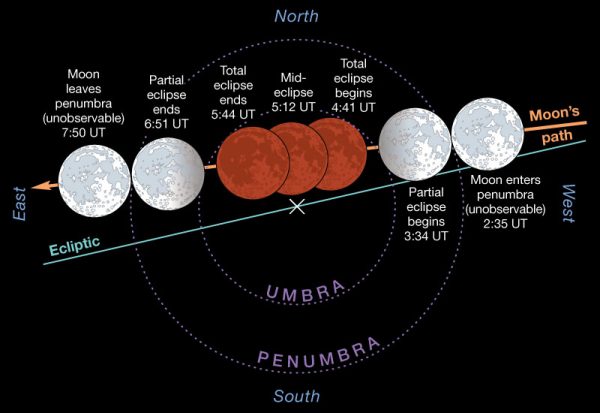
- 11:41 p.m.: Total lunar eclipse begins. If the Earth had no atmosphere, the moon would now be a black disk against the stars. Instead, it is yellowish, then orange, then reddish. This ruddy light is coming from a ring of sunrises and sunsets from the Earth dimly illuminating the darkened lunar surface. Popular culture calls this a “blood moon.”
- 12:12 a.m.: Middle of total lunar eclipse — maximum reddening of the moon.
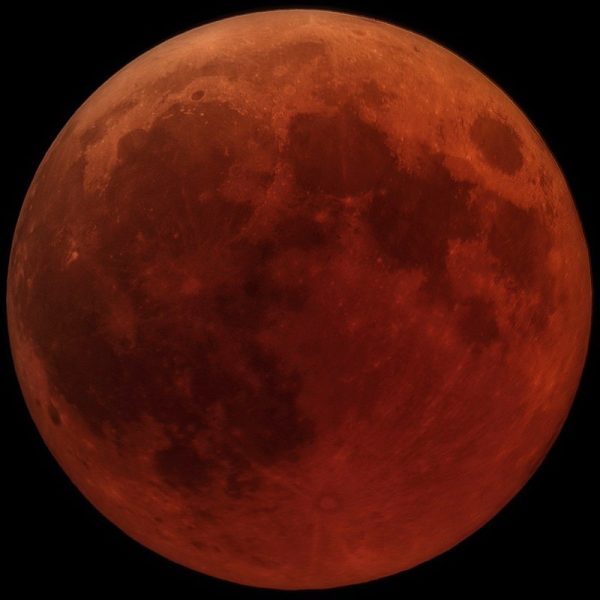
- 12:44 a.m.: Moon begins to exit the edge of the Earth’s umbra, reverses of the previous stages.
- 1:51 a.m.: Moon completely exits Earth’s umbra, partial eclipse ends as moon enters the penumbra. Observable part of the lunar eclipse ends.
- 2:50 a.m.: Moon completely exits the penumbra.
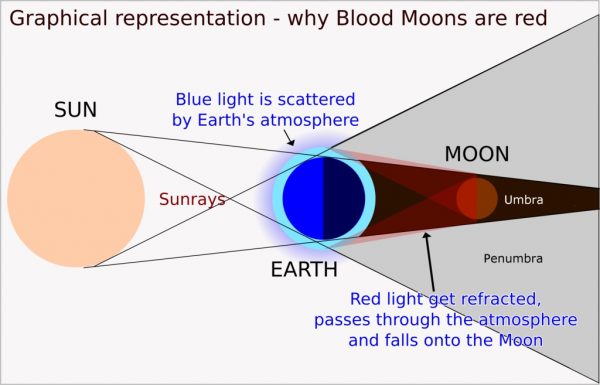
Now for a thought experiment: Imagine that you observe this lunar eclipse, but reverse your vantage point. Rather than watching the sun, Earth, moon syzygy event from West Virginia on the surface of the Earth, imagine that you are on the near side of the moon (lunar side always facing the Earth) watching the syzygy event from the surface of the moon as a solar eclipse.
Conceive that you are a space-suited astronaut (we want you to enjoy the event and not suffer a violent death by decompression) standing on the 1.2 km (0.75 mile) summit of one of the central impact rebound peaks at the center of the prominent lunar feature, Copernicus crater. Copernicus crater is named after Nicolaus Copernicus, the Renaissance-era astronomer and mathematician who formulated the hypothesis that the sun (heliocentric model) was the center of the universe, rather than the generally accepted idea that the Earth (geocentric model) was at the center. What a perfect vantage point for an alternating point of view of this syzygy event.
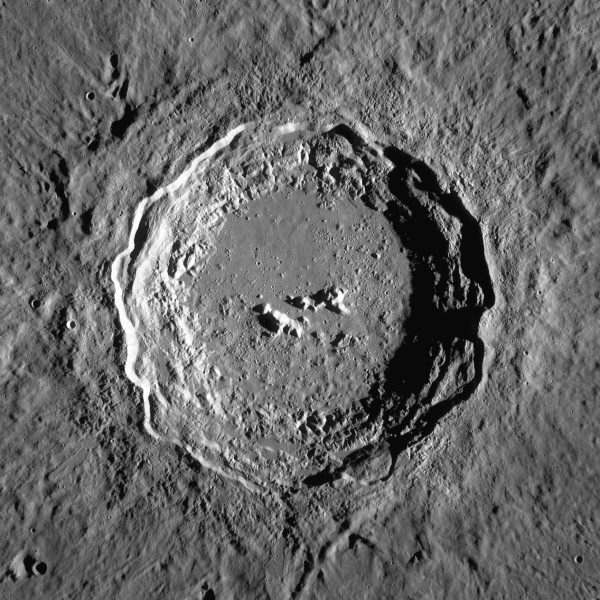
Copernicus crater can be seen from the Earth with binoculars or small telescope standing out as a 93 km (58 miles) wide, large-impact scar, an astrobleme, created by an asteroid or comet collision some 800 million years ago. Copernicus crater is at the center of an impressive ejecta debris ray system launched from the point of impact across a vast lunar expanse. Copernicus can best be seen just north of midway along the lunar “terminator line.” The terminator line is the lunar sunrise shadow line separating lunar night and day. Copernicus crater’s three-dimensional nature is best seen about two days after first quarter phase, during the waxing gibbous lunar phase.
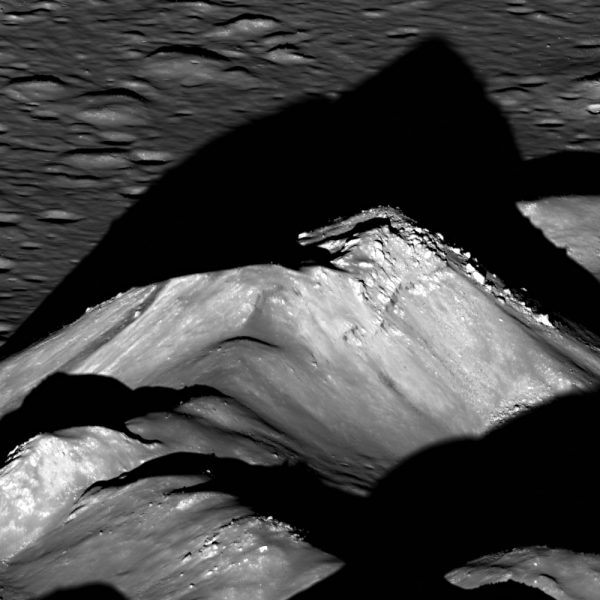
What would you see perched atop a central rebound peak within Copernicus crater? Remember, everything is reversed when you reverse your vantage point of view for this syzygy event. What you will witness is a solar eclipse. All around you, 360 degrees on the lunar horizon, is the terraced slumps of the crater wall ramparts, enclosing the crater floor of Copernicus brightly illuminated by the sun. Looking high in the lunar south-eastern sky is the sun in a black nearly starless sky. Most likely your spacesuit helmet is equipped with active solar filters to protect your eyes from unfiltered ultraviolet and visible light. We have been spoiled on Earth, living at the bottom of an ocean of air that constantly filters and softens the harsh and harmful sunlight, and still, we dare not stare directly at the sun. The activated solar filters in your visor coupled with your eyes being engaged in bright light adaption mode render even the brightest stars and planets difficult to see.
You sit down on a large flat lunar boulder and lay back looking up, your heads up display reads EST January 20th, 2019 9:30 p.m. Next to the sun is the Earth in new phase, just over two degrees in diameter. A faint arc of the illuminated atmosphere the only hint it is there
- 9:35 p.m.: the western edge of the moon enters the edge of the Earth’s penumbra shadow.
- 9:59 p.m.: Copernicus crater enters the edge of the Earth’s penumbra shadow — as the sun is not a point source of light, the Earth creates a penumbra shadow, causing the intensity of sunlight on the lunar surface to dim during this time, more noticeable as time progresses.
A partial solar eclipse begins. The leading edge of the sun touches the edge of the Earth and its atmosphere nearly simultaneously. Where the sun’s disk touches the two-degree dark disk of the Earth, a yellow glow forms. As more of the sun is hidden, this glow spreads outward along the edge of the Earth deepening to orange and then to a rosy red. Every minute that goes by, more of the sun disappears as the two arcs of rosy red race around the Earth tracing out the huge black disk. As the last vestige of the sun merges with the red ring, we realize we are looking at a standing wave of a hundred thousand sunrises and sunsets as the Earth rolls along under that rose-color annulus of scattered and refracted sunlight encompassing the darkened globe of the Earth.
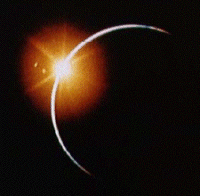
- 11 p.m.: The sun winks out behind the Earth, the active visor solar filters deactivate. You turn down and off the heads up displays in your visor, and as your eyes at once start to dark adapt. Copernicus crater enters the edge of the Earth’s umbra shadow — the deepest shadow — totality is reached. Total solar eclipse as seen from Copernicus crater begins — the stars and planets start to brighten. The light rosy ring around the earth slowly deepens.
- 12:03 a.m.: The Copernicus crater is completely bathed in the sunrise and sunset light from the Earth. The lunar sky continues to darken.
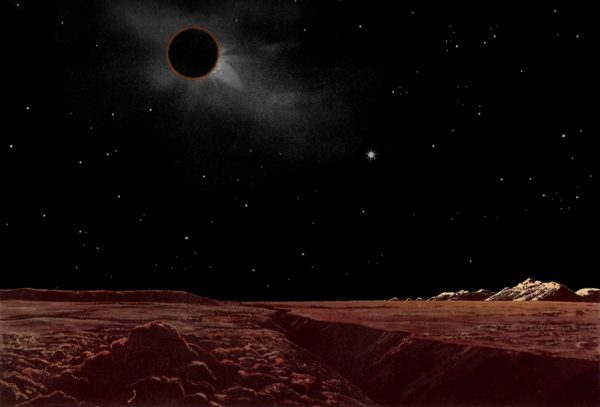
- 12:34 a.m.: Midpoint of total solar eclipse from Copernicus crater — maximum reddening of the surrounding lunar surface, blushing with a volcanic dull orange-red glow. Your eyes are now completely dark-adapted. You can see the stars, planets and Milky Way far better than from the surface of the Earth. Nearly 20,000 untwinkling stars sprinkle the lunar sky. The Earth is a black globe encircled by an asymmetric rosy ring of ongoing terrestrial sunsets and sunrises. Offset from center is the solar corona, the sun’s outer atmosphere — lifting above the northern arc of rosy light. Within the blackened disk is the faint glowing glimmer of coastal city lights and mega-metropolitan sprawl signifying the home of a self-centered wasteful technological species on the hopeful verge of figuring out how best to share their world with the rest of its inhabitants while effectively utilizing its dwindling resources without poisoning itself in the process. It is amazing that during a solar eclipse from the surface of the moon, you can see humanity’s wasteful nebula glow from our global collective sloppy use of bad and excessive nighttime lighting across 9/7 of a light-second of space.
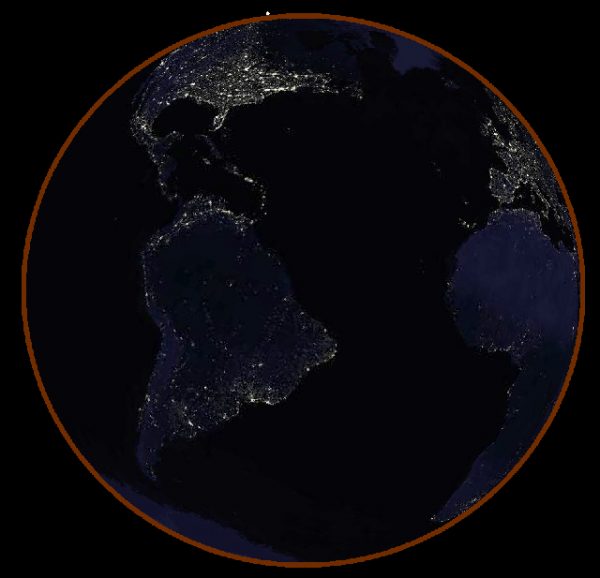
Perhaps this single image, an image of the enormity of our wastefulness at so vast in scale that it can be seen from the moon will awaken in our species a sense of pause.
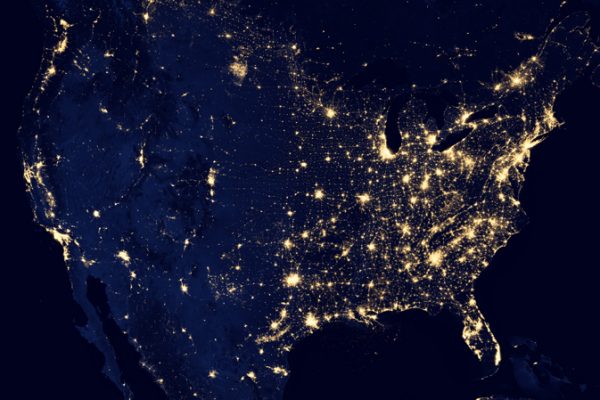
In the meantime, lunar entrepreneurs would be smart to book lunar visits during total solar eclipses as seen from the moon. This may be the most amazing sight that a tourist can witness in the Earth/moon system and may be a key driver in lunar tourism.
If you want company, access to a telescope, a cup or two of hot chocolate, restrooms, and a place to warm up in if it gets cold during the Jan. 20-21 lunar eclipse, join me at SMART Centre Market in Wheeling. I will be there by 10 p.m.
• Robert E. Strong received a bachelor of arts degree in physics with minors in mathematics and philosophy and has a master’s degree in space studies. Robert taught secondary school math and science in Benin, West Africa, (Peace Corps volunteer) and in American Samoa. He worked as a physicist in a research laboratory. Robert is president of the Near Earth Object Foundation dedicated to educating the general public about Near Earth Objects and providing public StarWatches. Robert and his wife Libby started the SMART-Center in 1994, a hub for science- and math-related activities for area schools, educators and the community. They also operate the SMART Centre Market — an interactive hands-on science store in Wheeling, featuring Orion telescopes, science toys and Kirke’s ice cream.


